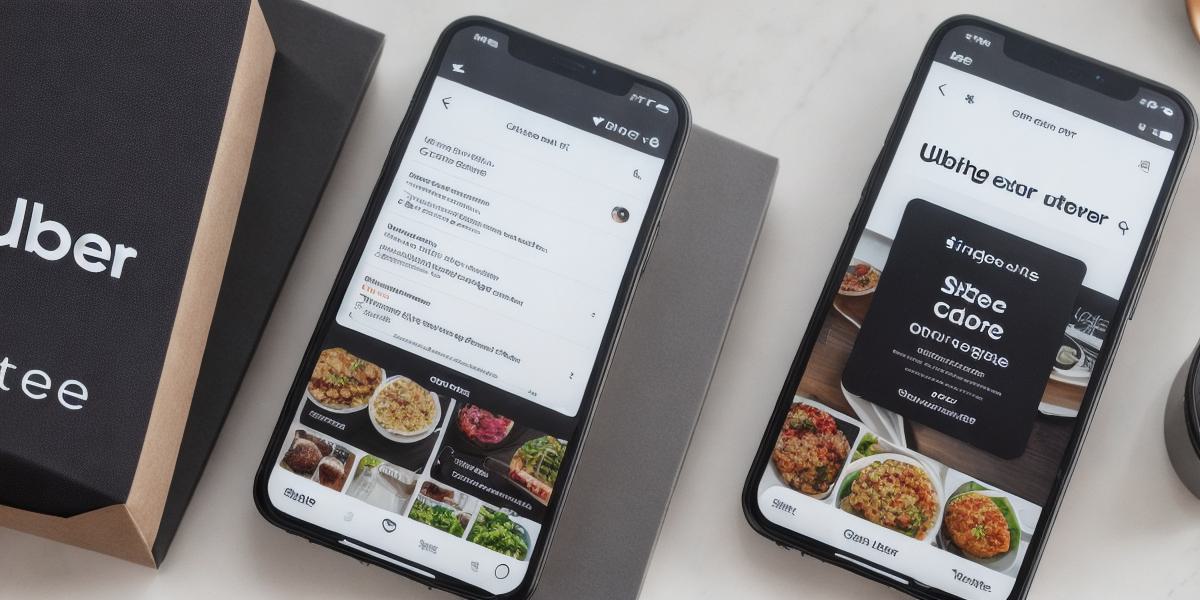Marketing is an art and science that requires careful planning, execution, and continuous monitoring. To create a successful marketing mix strategy, you need to understand the key components that make up your target audience’s behavior and preferences. In this article, we will explore the seven Ps of a viral marketing mix strategy and provide real-life examples and expert opinions to help you craft an effective plan for your business.

I. Understanding Your Audience: The First Step to Creating a Viral Marketing Mix Strategy
Before creating a viral marketing mix strategy, it’s essential to understand your target audience’s behavior and preferences. By identifying the demographics, psychographics, and interests of your ideal customers, you can develop a targeted approach that resonates with them. Here are some ways to gather valuable insights about your audience:
- Conduct market research: Use surveys, focus groups, and online tools to gather data on your target audience’s demographics, preferences, and buying behavior. This information will help you understand their pain points, motivations, and interests.
- Analyze your competitors: Study your competitors’ marketing strategies, campaigns, and content to see what works well for their target audience. By analyzing their successes and failures, you can learn from them and improve upon their approach.
- Monitor social media: Use social media listening tools to monitor conversations about your brand or industry. This will help you understand your customers’ feedback, opinions, and concerns, which you can use to refine your marketing strategy.
- Engage with influencers: Partner with influencers who have a large following in your target market. By collaborating with them, you can reach a wider audience and gain credibility for your brand.
II. The Seven Ps of a Viral Marketing Mix Strategy
Now that you have a better understanding of your target audience, let’s explore the seven Ps of a viral marketing mix strategy:
- Product: Your product or service is at the heart of your marketing strategy. It’s essential to create a product that meets your customers’ needs and solves their problems. By developing a unique value proposition (UVP), you can differentiate your product from your competitors and attract more customers.
- Price: The price of your product or service can significantly impact its success. You need to find the right balance between affordability and profitability that appeals to your target audience. Consider using pricing strategies such as discounts, bundling, or subscription models to incentivize customers to make a purchase.
- Place: The distribution channels you use to sell your product or service can also affect its success. Choose the right channels that are accessible and convenient for your target audience. This could be online marketplaces, physical stores, or direct-to-consumer (DTC) sales.
- Promotion: Your marketing campaign needs to be engaging, informative, and memorable to capture your target audience’s attention. Use a mix of promotional tactics such as content marketing, social media advertising, email marketing, and influencer marketing to reach a wider audience.
- People: Your team members play a critical role in the success of your marketing strategy. It’s essential to hire the right people who share your vision and can execute the plan effectively. Choose individuals with diverse skills and experiences that complement each other and bring unique perspectives.
- Process: A well-defined process is crucial for executing your marketing strategy efficiently. Develop a clear roadmap that outlines the steps involved in creating and implementing your campaign, including timelines, milestones, and metrics for measuring success.
- Physical Evidence: Finally, physical evidence such as product demos, samples, or prototypes can help you showcase your product’s benefits and create a positive first impression with potential customers. This can be especially important for products that are complex or require a significant investment of time and money to purchase.
III. Real-Life Examples of Viral Marketing Mix Strategies
Now, let’s take a closer look at some real-life examples of successful viral marketing mix strategies:
- Coca-Cola’s Share a Coke Campaign
Coca-Cola’s "Share a Coke" campaign was a massive success that generated millions of dollars in revenue and increased brand awareness. The campaign involved printing personalized Coke bottles with popular names and phrases, encouraging customers to share them on social media. This strategy tapped into the power of social media influencers and created a sense of community among Coke’s target audience, making it a viral hit.
- Dollar Shave Club’s "Our Blades Are F**ing Good" Video
Dollar Shave Club’s "Our Blades are F**ing Good" video went viral on YouTube and helped the company grow its revenue from $1 million to $100 million in just three years. The video showcased the company’s products in a humorous and memorable way, resonating with the target audience’s sense of humor and making it shareable on social media.
- Old Spice’s "The Man Your Man Could Smell Like" Campaign
Old Spice’s "The Man Your Man Could Smell Like" campaign was a viral hit that generated over 100 million views on YouTube and helped the company increase its sales by 107%. The campaign involved using humor, memorable slogans, and physical comedy to create an entertaining video that showcased Old Spice’s products in a new light.
IV. Expert Opinions and Tips for Crafting a Viral Marketing Mix Strategy
Now that we’ve looked at some real-life examples of successful viral marketing mix strategies, let’s hear from some experts on how to craft an effective plan:
- Neil Patel, Digital Marketing Expert: "A successful marketing strategy requires a deep understanding of your target audience and their behavior. You need to create content that resonates with them, uses the right channels to reach them, and provides value at every touchpoint."
- Gary Vaynerchuk, Social Media Mogul: "The key to a viral marketing mix strategy is to be authentic and create content that reflects your brand’s personality and values. You need to create shareable content that speaks to your target audience’s emotions and inspires them to take action."
- Ann Handley, Content Marketing Pro: "Creating a successful marketing campaign requires a well-defined roadmap with clear goals, milestones, and metrics for measuring success. You need to develop a clear plan that outlines the steps involved in creating and executing your strategy, including timelines and budgets."
- Jay Baer, Digital Marketing Strategist: "Influencer marketing is a powerful tool for reaching new audiences and building trust with potential customers. Look for influencers who have a large following in your target market and whose values align with your brand’s."
- Amy Porterfield, Online Business Coach: "Creating a viral marketing mix strategy requires a willingness to experiment and pivot as needed. Don’t be afraid to try new tactics and approaches, but always keep your target audience in mind and measure the results of your efforts."
V. FAQs on Viral Marketing Mix Strategies
Now that we’ve covered everything you need to know about viral marketing mix strategies, let’s answer some frequently asked questions:
- What is a viral marketing strategy?
A viral marketing strategy involves creating content or campaigns that are designed to be shareable and generate buzz among potential customers. The goal is to create a sense of excitement and urgency around the product or service, encouraging people to share it with their friends and family.
- How do you measure the success of a viral marketing campaign?
The success of a viral marketing campaign can be measured using various metrics such as reach, engagement rate, click-through rate, conversion rate, and revenue generated. It’s important to set clear goals and benchmarks before starting your campaign, so you can track your progress and adjust your strategy as needed.
- What are the key elements of a successful viral marketing mix strategy?
The key elements of a successful viral marketing mix strategy include understanding your target audience, creating engaging content, using the right channels to reach your audience, measuring your results, and pivoting as needed. It’s essential to develop a well-defined roadmap that outlines the steps involved in executing your strategy effectively.

- How can you create shareable content for a viral marketing campaign?
To create shareable content for a viral marketing campaign, you need to focus on creating content that is informative, entertaining, and memorable. Use humor, emotional triggers, and visual elements to make your content stand out and encourage people to share it with their friends and family.
- How can you find the right influencers for a viral marketing campaign?
To find the right influencers for a viral marketing campaign, look for individuals who have a large following in your target market and whose values align with your brand’s. You can use social media analytics tools to identify influencers based on their engagement rates, reach, and demographics.




